This post may contain paid links. If you make a purchase through links on our site, we may earn a commission.
Knowing how to cook rice on the stove makes a big difference in your favorite recipes with rice! My stovetop rice recipe is easy-to-follow and results in tasty, fluffy white rice to use in all of your favorite dishes. Ready in just 35 minutes.
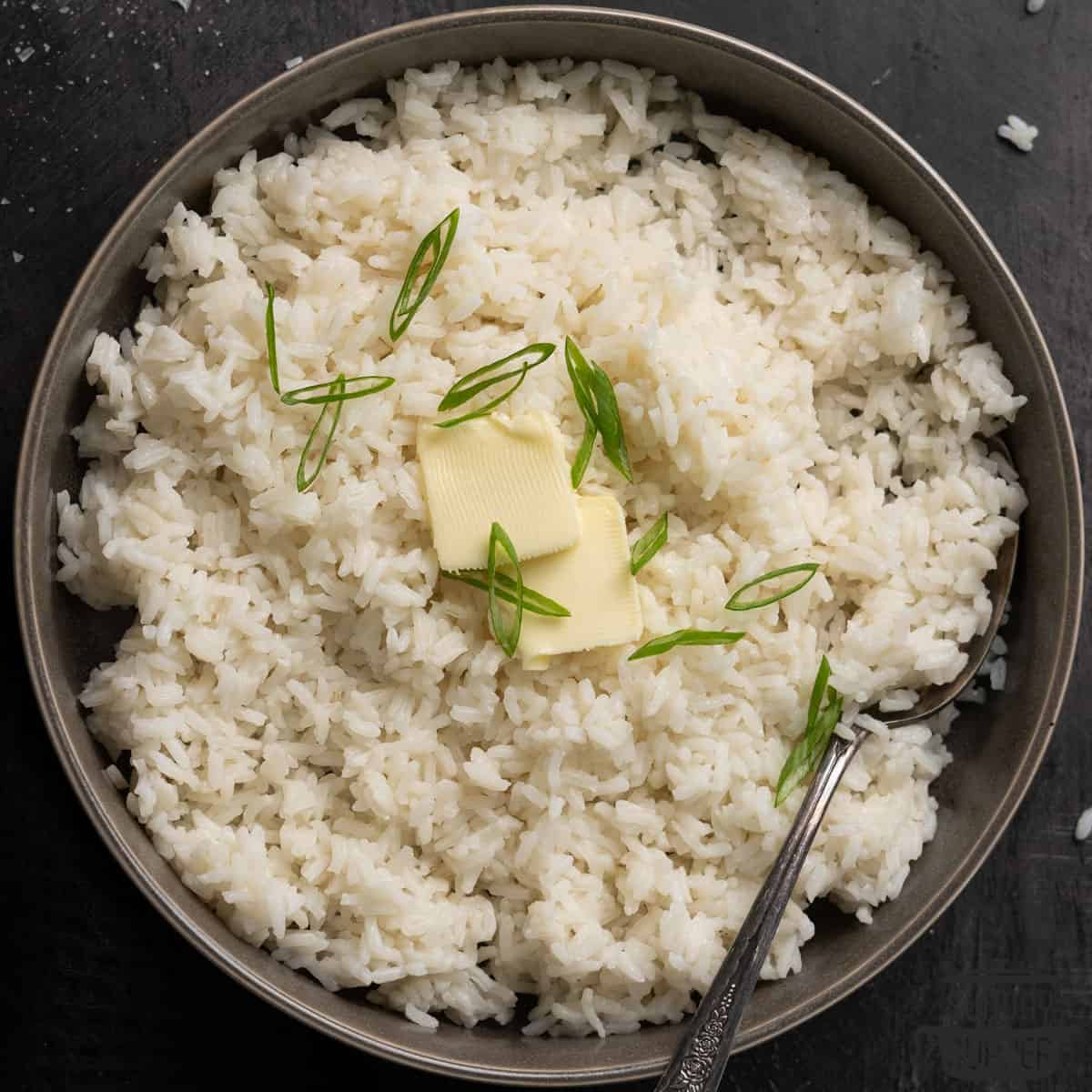
Perfect Rice
White rice sounds like it should be easy enough to make: add the rice to water, boil, drop it to a simmer, cover, cook. But, in my experience, there are many hidden factors that can influence whether you wind up with fluffy, perfect rice, or a disaster! (I’ve been there!)
My guide to cooking rice is all you need to ensure perfect rice on the stove every time. No more under- or over-cooked rice! If you want to cook better rice, start here!
Jump to:
- Perfect Rice
- What’s the best way to cook white rice?
- Stovetop White Rice Ingredients
- How to Cook Rice on the Stove
- Also try…
- My Favorite Rice Recipes
- Easy Dinner Ideas
- Tips for How to Make Fluffy Rice
- Storing and Reheating Leftover Rice
- Recipe
- Rice on the Stove FAQ
- What to Serve with Stovetop Rice
- Pin it for later!
- Reviews
What’s the best way to cook white rice?
In my opinion, there’s no one single best way to cook white rice, as every method has its own strengths! But similarly, there are drawbacks to each method, and some can be trickier than others. Here’s my breakdown of all the ways to cook rice.
Instant Pot White Rice
- Pros:
- The fastest way to cook rice
- Very fluffy and well cooked
- Cons:
- Requires an Instant Pot!
- Can’t easily check for doneness, requires exact timing.
- See my Instant Pot White Rice Recipe.
Microwave White Rice
- Pros:
- Super accessible; all it takes is a bowl and a microwave.
- Fast!
- Great for dorms and hotel rooms
- Cons:
- Can be messy
- Bowl can be extremely hot
- Little flexibility for add-ins
- See my Microwave Rice recipe.
Stovetop White Rice
- Pros:
- Accessible, all you need is a pot with a lid and a stove
- Easy and mess free
- Great for adding in other ingredients – I do this in my Portuguese Rice
- Cons:
- Can be finicky
- Requires the right kind of pot
- Read on for the recipe!
Rice Cooker White Rice
- Pros:
- Cooks rice just about perfectly every time
- Doesn’t require timers or checking
- Works well with added ingredients
- Cons:
- Requires a rice cooker!
- Versatility depends on the quality of the rice cooker
- Tends to spatter water and make a mess
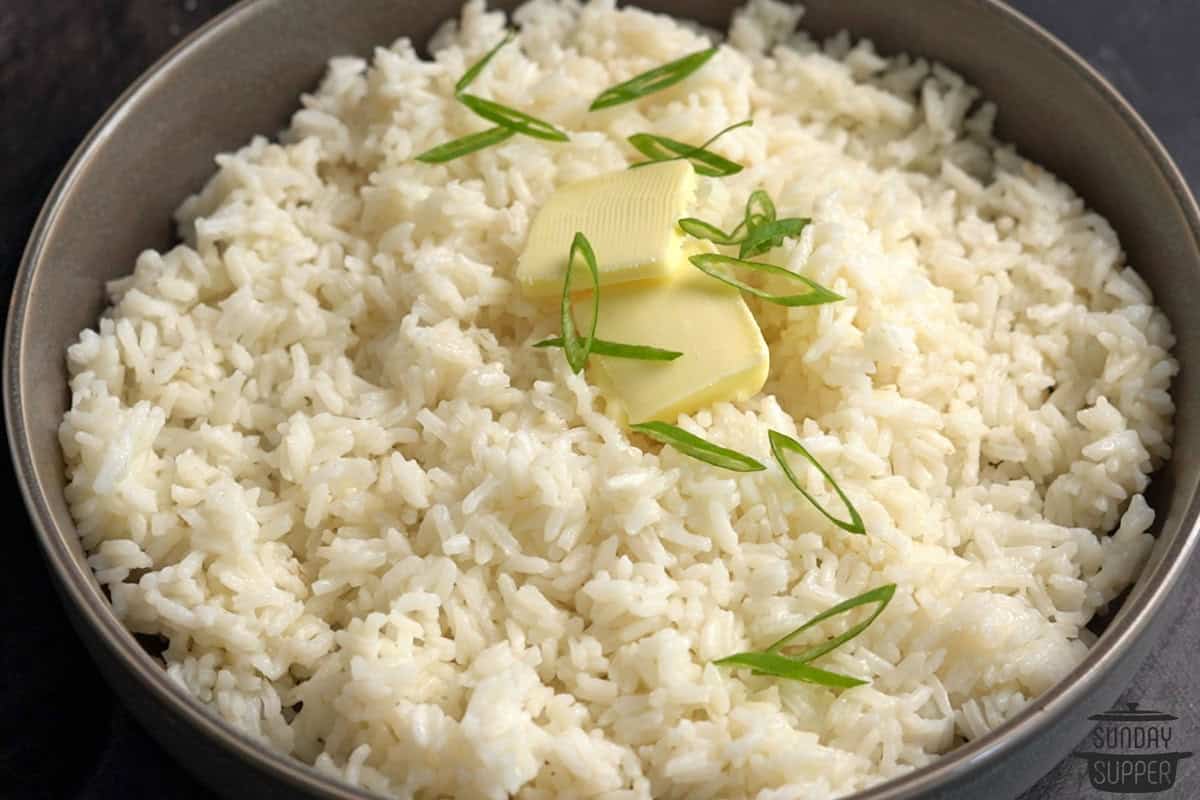
Stovetop White Rice Ingredients
- White Rice: This recipe is tuned to long-grain white rice, which is standard in the US. If you’re making a different variety such as Basmati rice or Jasmine rice, make sure to check the package; water ratios differ per variety!
- Water: The flavor of the water will absorb into the rice, so make sure you’re using filtered water. For extra flavor, you can use chicken broth or add a squeeze of lemon or lime juice.
- Salt: Salt will bring out the depth of the flavor of rice, which is mild and gently sweet. Avoid table salt, and instead opt for kosher salt or sea salt.
- Butter: My secret to the best rice ever? Add a bit of butter! The butter will coat the rice and add this mouthwatering buttery flavor that takes rice from plain to perfect. Salted or unsalted butter will work; just add more salt for unsalted butter.
Isabel’s Top Tip
Rinse your rice! Most US brands of rice aren’t washed before they’re packaged. This leaves the grains coated in powdery excess starch, which can leave the cooked rice mushy and stuck together. Before you start cooking, pour the rice in a fine mesh strainer and rinse it under cold water, shaking and agitating it frequently, until the water runs clear.
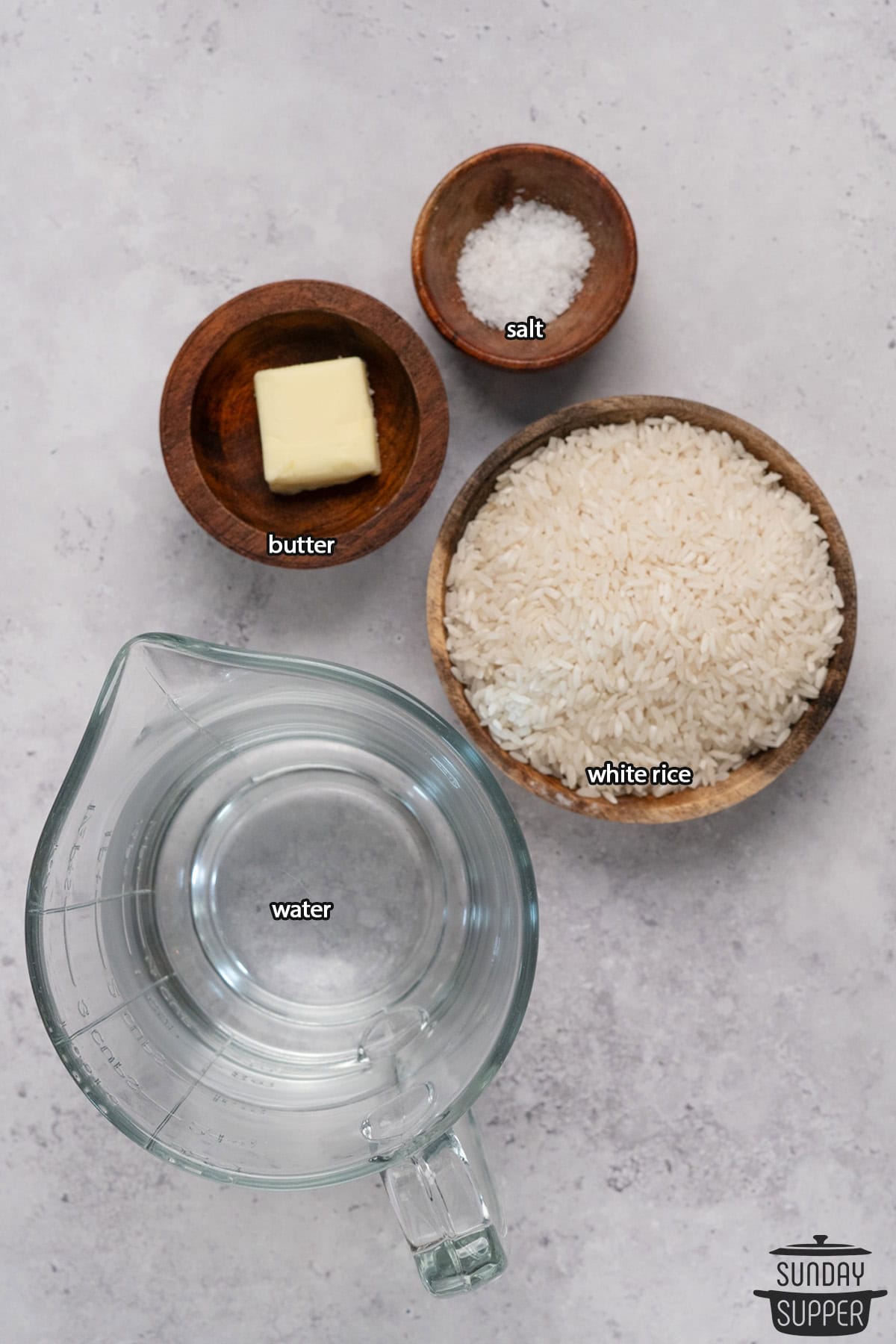
How to Cook Rice on the Stove
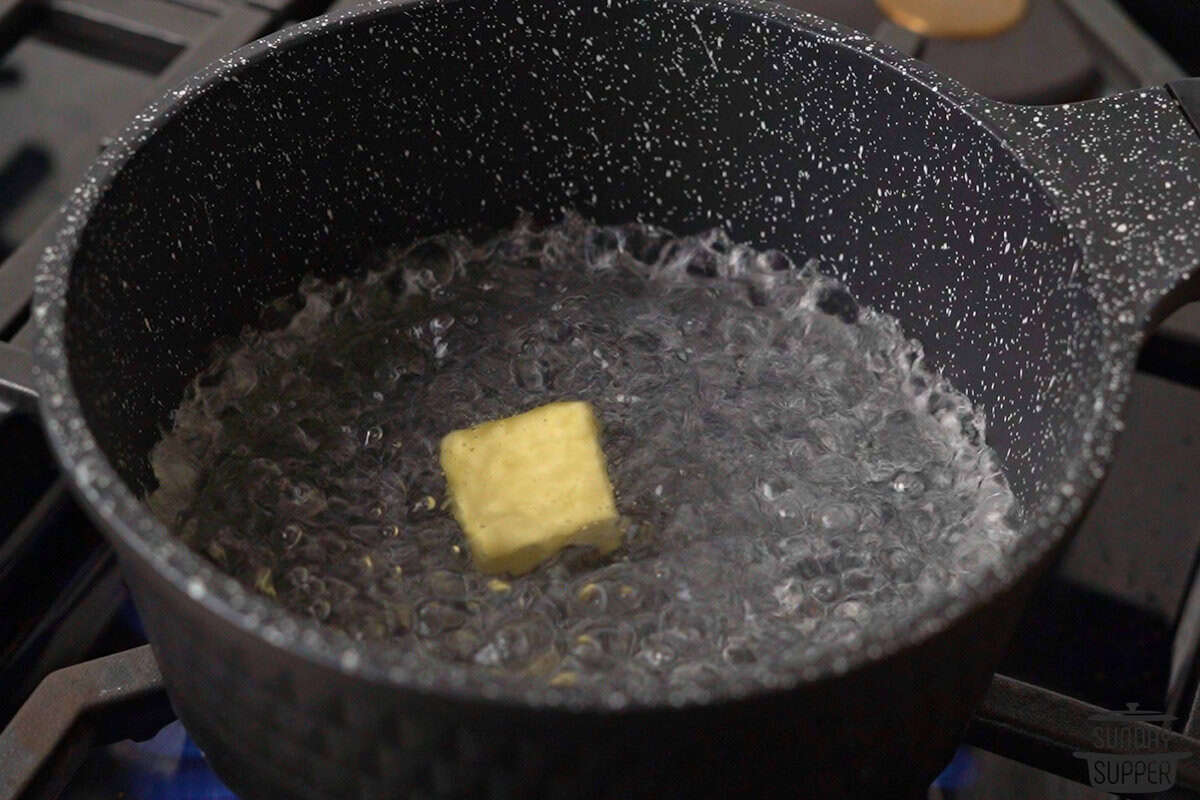
1: Boil the Water
Pour the water in a medium sized pot over medium-high heat, and bring to a boil. Once boiling, add in the salt and butter, and let the butter melt fully.
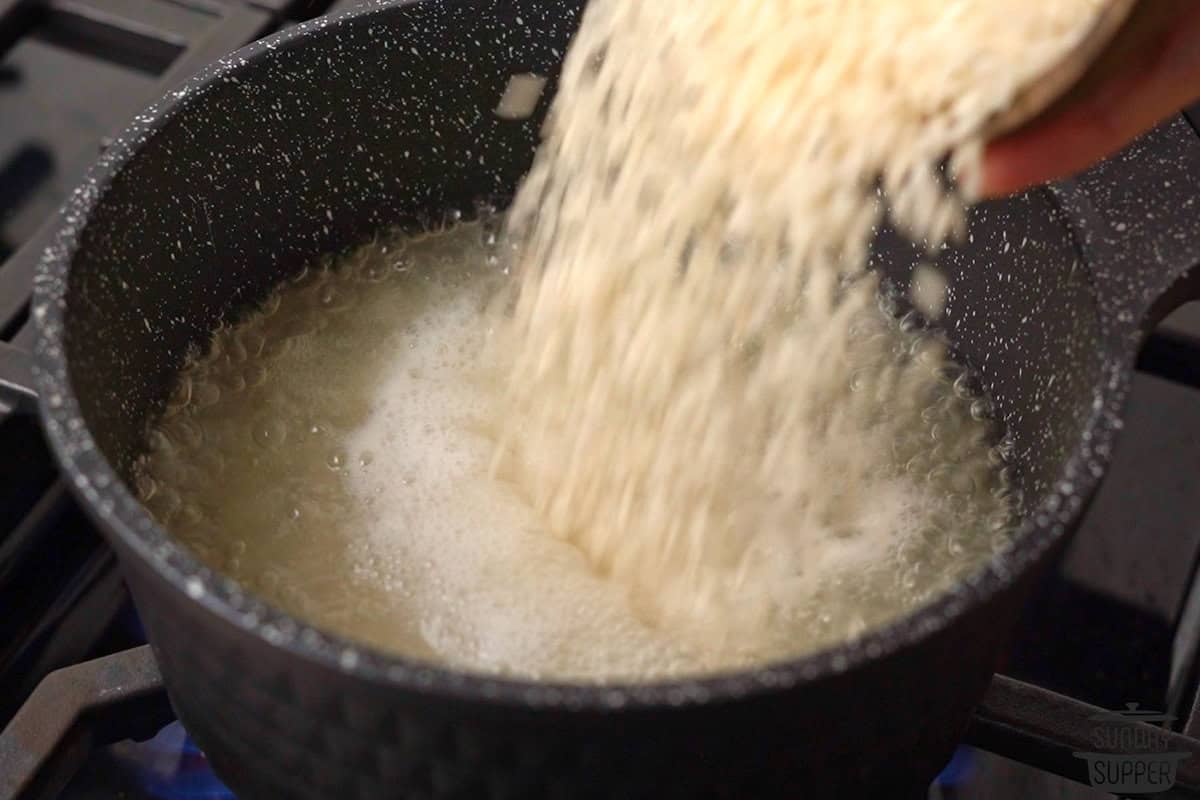
2: Add the Rice
Once the water is boiling again, add in the rice and give it a stir. Stir again once it starts simmering, then put on the lid, and turn the heat to Low.
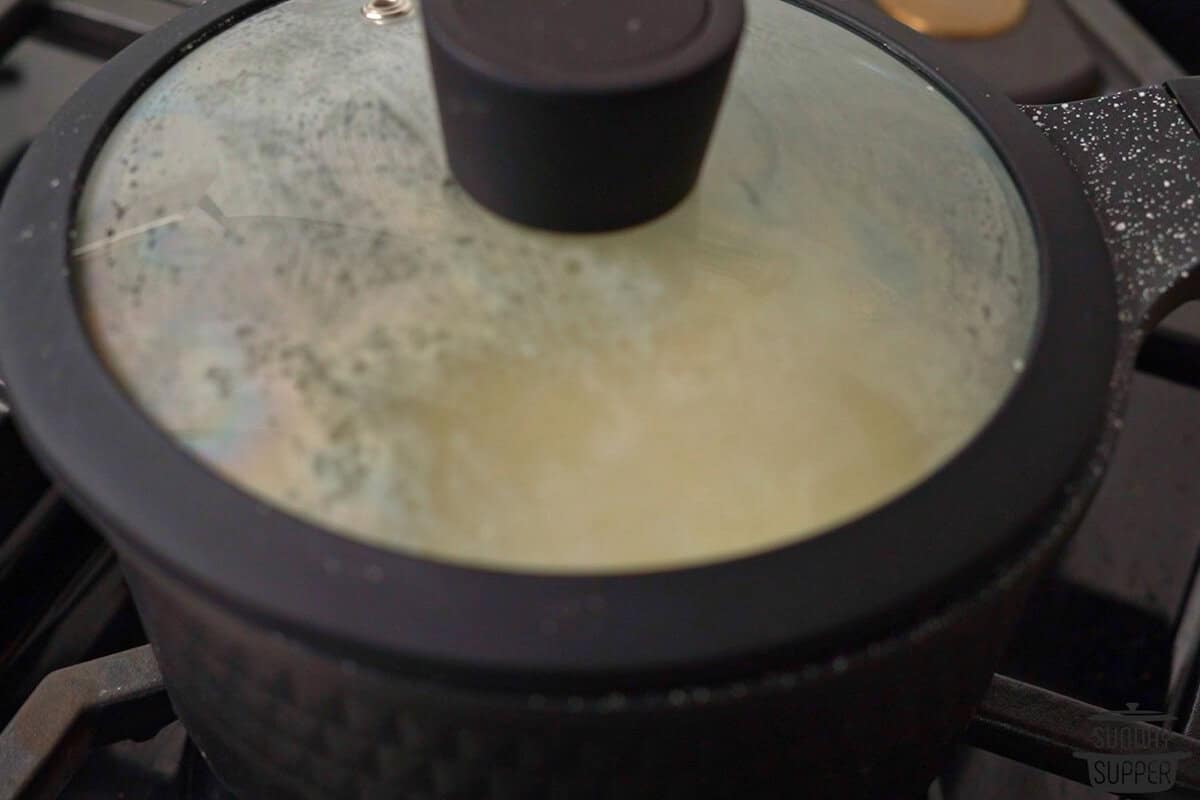
3: Simmer
Keep the rice simmering lightly (depending on your pot size and burner size, this may take adjusting the temperature) for 17 minutes. Once this time has passed, start checking for doneness; it may take up to 25 minutes for the rice to be cooked.

4: Remove from Heat
Once the rice is fully cooked, remove it from the heat. Keep the lid on, and let it rest for 5-10 minutes, until all the water has fully absorbed.

5: Fluff and serve!
Remove the lid, then fluff the rice with a fork and serve right away!
My Favorite Rice Recipes
- Portuguese Rice – my favorite rice in the world! Made with chicken bouillon and onion for extra flavorful rice.
- Spanish Rice and Beans – All the hearty, filling benefits of rice and beans, made in one pot!
- Rice-a-Roni – This gluten free twist on boxed rice-a-roni is super creamy and flavorful!
- Cauliflower Rice – It’s not really rice, but it’s super delicious and low carb, to boot!
Easy Dinner Ideas
Tips for How to Make Fluffy Rice
- The pan can make a big difference. You want a wide, shallow stainless steel or tempered pan; deep saucepans are not ideal, as the simmering water will overcook the rice on the bottom and under cook the rice on the top.
- Make sure you have a well-fitting lid! The lid needs to fit very well to ensure that the steam is trapped.
- Don’t open the lid when the rice is cooking! Opening the lid multiple times during cooking can release all the steam and lead to the rice not cooking thoroughly. Only start checking it once a full 17 minutes have passed, or you can see no more water between the grains and it’s no longer bubbly.
- Rinsing rice makes a huge difference, but it’s not strictly necessary. I like the cleaner and less sticky texture of rice that has been rinsed, but it depends on the way you’d like to cook your rice! For stickier rice, don’t rinse it.
- If you rinse the rice, you may need to use less water. I rinse the rice until the water runs clear, then use a ratio of 1 cup rice to 1½ cup water. For rise that hasn’t been rinsed, use 1 cup rice to 2 cups of water.
- Not all kinds of rice cook the same! Basmati, jasmine, and short grain rice will have different water requirements and cook times. You can use the same cooking method, but check the packaging for water ratios! Note that brown rice cooks completely differently and will take up to an hour to cook completely.

Storing and Reheating Leftover Rice
- Freezer: Freezing cooked rice is a great way to prep it for later meals! Pack it into an airtight container, then freeze for up to 6 months. I like to store it in 2-3 serving size amounts to allow for easy thawing.
- Refrigerator: You can store cooked rice in the fridge in an airtight container for up to 5 days. It will start drying out as time goes on, so it’s best to eat leftovers quickly!
- Thawing: Thaw leftover rice in the fridge overnight, or place it in the microwave in a covered bowl with extra water and heat at 20% power for 3 minutes.
- Reheating: To keep rice moist and fluffy when reheated, place it in a microwave-safe bowl and add a splash of water. Then place a lid on it and microwave for 1 minute, or until hot and steamy, mixing well halfway.
Recipe
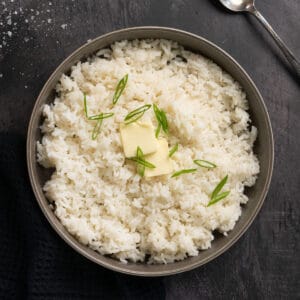
How to Cook Rice on the Stove
Equipment
- Medium-sized pot with a lid
Ingredients
- 1 cup White rice
- 2 cups Water or 1½ cups if using rinsed rice
- 1 Tablespoon Salted butter
- ½ teaspoon Salt
Instructions
- Optional: Place the rice in a fine-mesh strainer and rinse under cold water until the water runs clear, shaking it to ensure all the rice is rinsed.1 cup White rice
- Pour the water in a medium-sized pot over medium-high heat, and bring to a boil.2 cups Water
- Add the salt and butter, and let the butter melt completely. Bring back to a boil.1 Tablespoon Salted butter, ½ teaspoon Salt
- Add the rice and stir it in. Once it's simmering, turn the heat down to low, and cover the pot with a lid.
- Simmer for 17 minutes without touching the lid. Once it's no longer bubbling, start checking doneness.
- Once the rice is tender, remove the pan from the heat and let rest for 10 minutes with the lid on.
- Fluff with a fork, then serve and enjoy!
Video
Nutrition
Rice on the Stove FAQ
Depending on if you rinse the rice or not, the ratio is 1 cup rice to 2 cups water for rice that hasn’t been rinsed, and 1 part rice to 1½ parts water for rinsed rice. The difference is due to the excess starch in unwashed rice that soaks up the extra water.
You don’t need to wash rice, and often I don’t, especially when I’m making seasoned rice like my favorite Spanish Beans and Rice. For that kind of recipe, the extra starch actually helps the flavors meld. But for plain white rice for other dishes, I recommend rinsing the rice, as it will turn out less sticky.
I’ve always had the best luck using a shallow stainless steel skillet with a lid. Deeper pots tend to cook the rice unevenly, and I haven’t had great results with nonstick skillets, as I enjoy the slight crust at the bottom of the pan that stainless steel gives.
What to Serve with Stovetop Rice
- Chinese Prawns – a reader favorite recipe for a reason! Sticky, spicy, and mouthwatering!
- Spicy Chinese Chicken – Super easy and super delicious, this tender chicken is the perfect protein to add to rice!
- Mongolian Beef – this 20 minute beef is begging for a bed of rice to be served on!
- Chicken Stir Fry – Stir fries are a classic for pairing with rice! Add it right into the pan with the other ingredients or serve the rice s a side dish.
- Lemon Butter Chicken – One of my favorite dishes to serve with rice. Add a little lemon juice and some chopped onion to the rice for an amazing side. I serve this all the time, and I’ve never seen plates scraped so thoroughly clean!
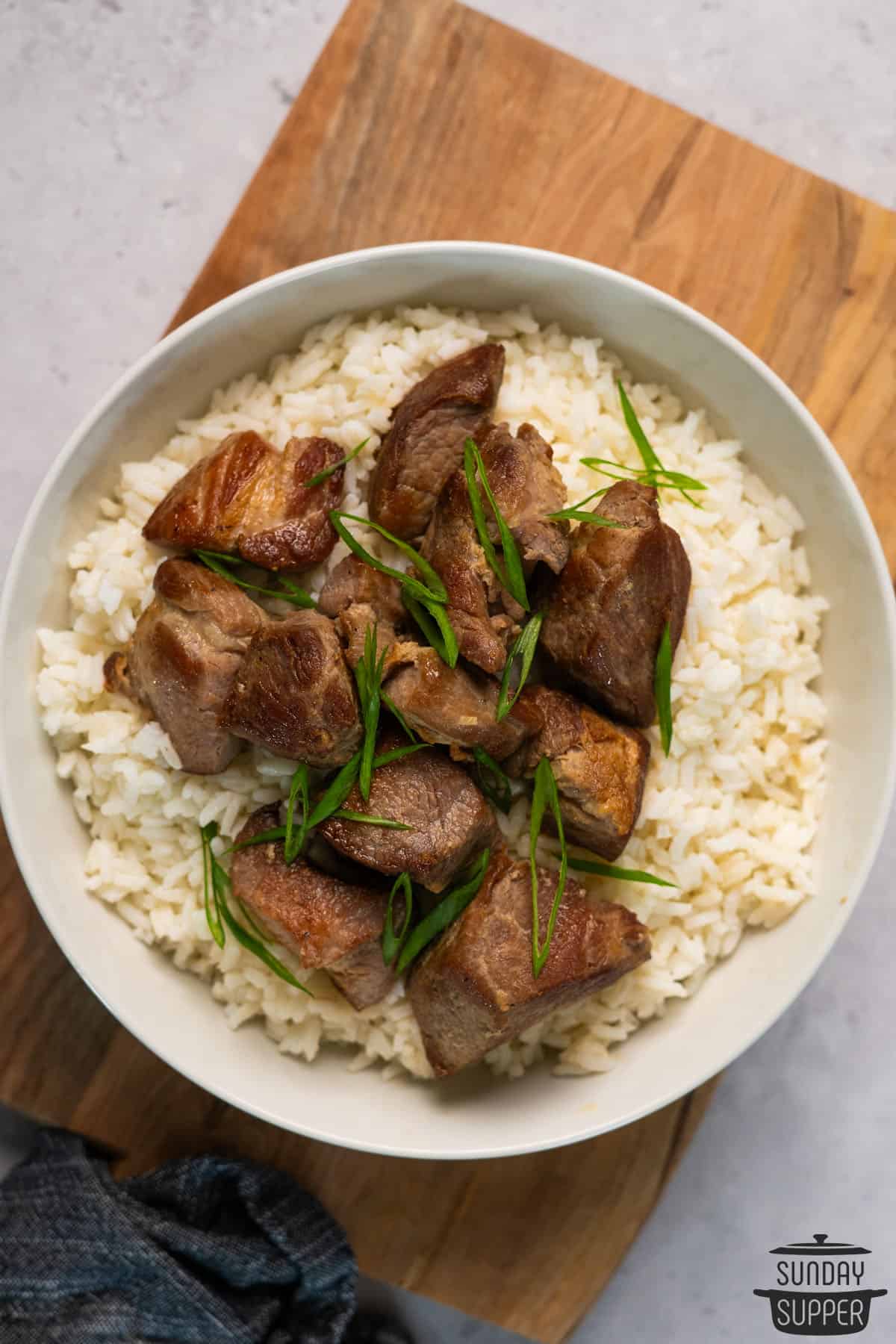
Pin it for later!
Did you enjoy this page? Save it on Pinterest for later!


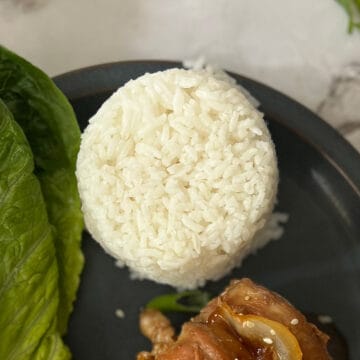
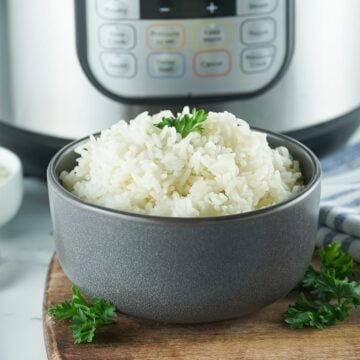
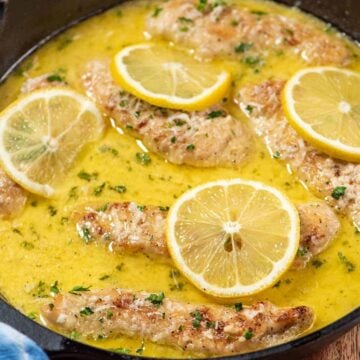
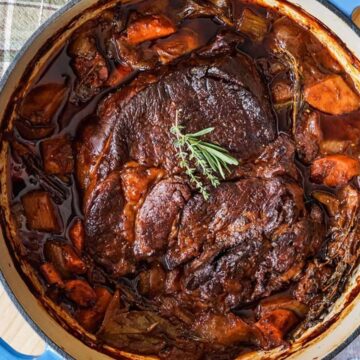
Comments
No Comments